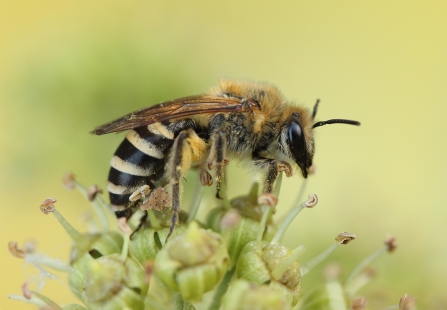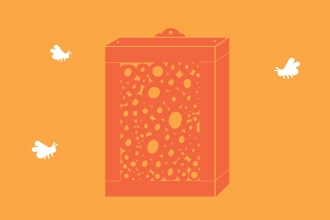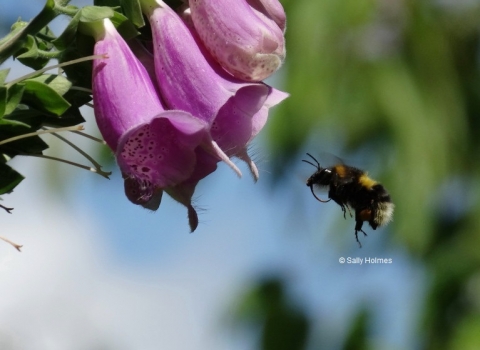Why do bees need our help?
There are a staggering 250 species of bee in the UK! These include 1 honey bee species, 25 bumblebees and an amazing 224 species of solitary bees, which come in many colours, shapes and sizes.
Bees are an extremely important part of our ecosystems and without them it could cost billions to pollinate our crops. Unfortunately with threats like the intensification of farming, pesticide use and declines in important habitats like wildflower meadows, many of our bee populations are declining or under threat.
We have put together this handy guide to show you a few ways that you can do your bit to help bees! 🐝
Apart from the familiar honey and bumblebees most species of bee are solitary meaning they love alone rather than in a colony. Many of these species are in decline due to a loss of suitable habitat, one way to help solitary bees is to install a bee brick into your home. The holes in these brick are used by bees to create nests and lay eggs and can become home to species such as mason and leaf-cutter bees.
Find out more about solitary bees
There are other types of wildlife homes you can install to your own home. Swift boxes are becoming popular and can transform a residential area into swift city! There are also bird boxes that look like bricks and can subtly be installed to create homes for blue tits and sparrows in surprising locations.
You don't need a large amount of space or expert plant knowledge to make a space friendly for our important pollinating insects. Potted plants and hanging baskets can be just as effective at attracting bees as large gardens. Beautiful flowers like lavender, buddleia and primrose and herbs like rosemary are sure to attract bees, but small trees like hazel and pussywillow are also useful as they help bees at different times of the year. Ivy is another important plant as it flowers in the autumn, do don't cut it back. Rarer species like the Ivy bee (image below) feed on the flowers. This species is a relatively new one to the UK, with sightings in Nottinghamshire for the first time in 2016.

Tim Sexton
Most people associate bees with living in hives, but most of our bees do not make colonies and are actually solitary. So where do they live? Many live in small holes or burrows that they dig themselves. The female spends most of her life searching for suitable nesting sites. Some species will nest in holes in the ground, while others will look for old beetle holes or hollow stems in which to lay their eggs. If you can provide a suitable home, these bees will come to you. There are many types of wildlife that can also benefit from 'hotels' or homes that you create for them.
Consider leaving an area of your garden to go wild, this can be as simple as leaving a patch of lawn to its own devices! Resist mowing your lawn until late July/August so the plants will have chance to flower. It doesn't matter how much space you have, a wildflower seed mix planted in a large plant pot can become a hive of activity (pun intended). Wildflower meadows are one of the fastest declining habitats in the UK, with a 97% decline since the 1930s which is one cause behind the decline of many pollinating species including bees. By creating your own wildflower meadow or grassland you could be creating a habitat vital to many insects.
Go chemical-free in your garden to help wildlife, make a safer environment for people, pets, bees, and save you money! Using pesticides not only harms the pest you are targeting but it can have knock on effect up the food chain on the other animals that predate on them. Although not targeted with pesticides, the effects of using pesticides is having a detrimental effect on our bees.
When you stop using chemicals to prevent pests, the first pests to return are often aphids. Encouraging natural predators is a great way to protect the plants your lovingly cared for without harming the other creatures that love your garden too, such as bees. Ladybirds and their larvae are a great natural predator of aphids, but you can also leave nettles to grow in another part of the garden as they attract aphids (hopefully away from your crops).
Another way to cut down the use of pesticide if you have already stopped using them in your garden is to buy organic produce when you can. The use of pesticides in large scale agriculture is another of the biggest threats our bees face.




















